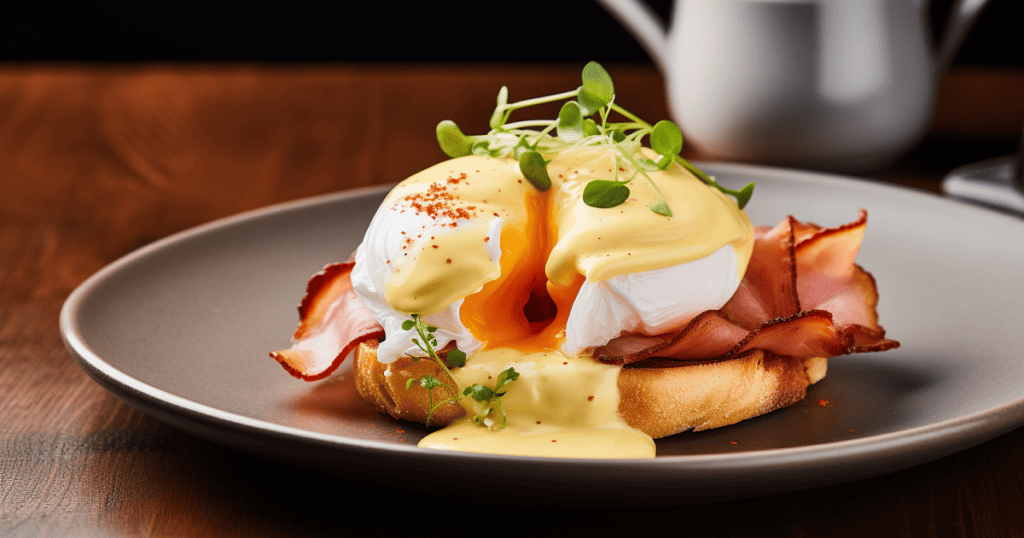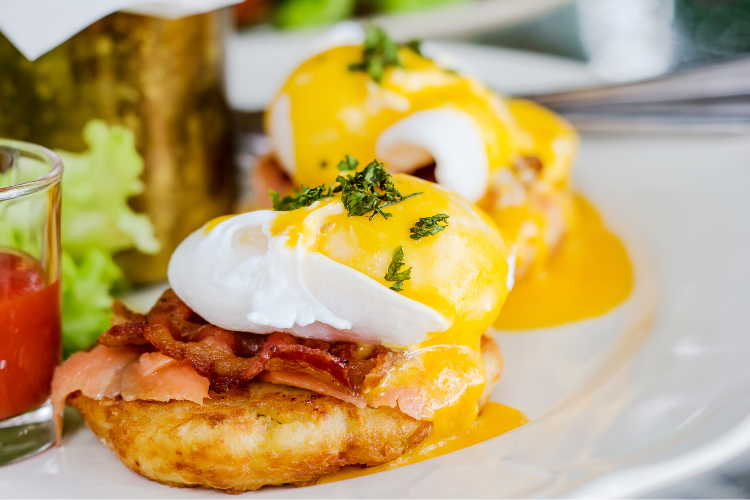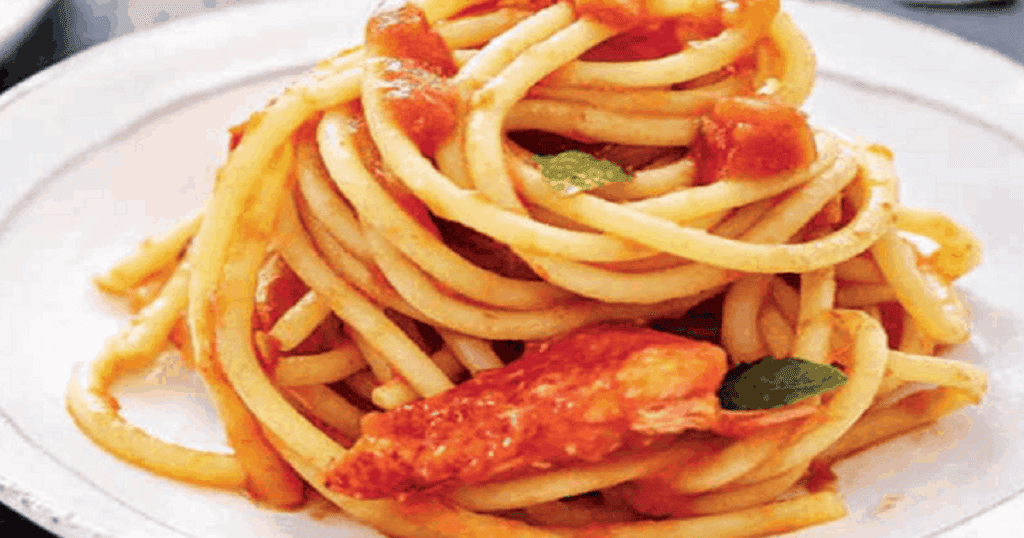Awaken your senses and start your day with the ultimate breakfast indulgence: Gordon Ramsay’s take on the classic Eggs Benedict. Transform your morning meal into a culinary masterpiece with the Michelin-starred chef’s signature twist. Imagine the exquisite harmony of a crisped-to-perfection slice of Parma ham, its salty crunch the perfect contrast to the silken poach of an egg.
Resting atop a lightly toasted English muffin and enrobed in a rich, buttery hollandaise sauce, each element of Gordon Ramsay’s Eggs Benedict with Crispy Parma Ham has been fine-tuned to achieve breakfast perfection. Whether you want to pamper your palate or impress guests with your brunch skills, this recipe is your gateway to elevating the day’s first meal to a luxurious dining experience.
Difference Between Eggs Benedict and Norwegian
Eggs Benedict and Norwegian are variations of poached egg dishes served on an English muffin with a sauce, typically hollandaise. The primary difference lies in the topping:
- Eggs Benedict: Traditionally topped with Canadian bacon or ham.
- Eggs Norwegian (Eggs Atlantic or Royale): Typically topped with smoked salmon instead of bacon or ham.
Difference Between Eggs Benedict and Eggs Florentine
Eggs Benedict and Eggs Florentine both include an English muffin and poached eggs topped with hollandaise sauce, but they differ in their vegetable components:
- Eggs Benedict: This does not typically include vegetables but is served with Canadian bacon or ham.
- Eggs Florentine: Features spinach as a key ingredient, which replaces the meat found in Eggs Benedict, making it a popular vegetarian alternative.
Alternatives to Hollandaise Sauce on Eggs Benedict
If you’re looking to replace hollandaise sauce on Eggs Benedict, here are some alternatives:
- Béarnaise Sauce: Similar to hollandaise but with added tarragon and shallots.
- Mornay Sauce: A béchamel sauce with cheese added.
- Avocado Sauce or Guacamole: For a healthier alternative with a different flavor profile.
- Salsa or Pico de Gallo: Provides a fresh, spicy kick.
- Cheese Sauce: A simple melted cheese sauce can be a comforting alternative.
- Herb-infused Olive Oil: For a lighter, dairy-free option.
Most Common Mistake in Hollandaise Sauce
The most common mistake when making hollandaise sauce is improper emulsification, leading to the sauce separating or curdling. This usually happens for one of the following reasons:
- Overheating: Hollandaise sauce should be cooked gently; too much heat can cause the egg yolks to scramble.
- Adding Butter Too Quickly: The melted butter should be added slowly while whisking vigorously to create a stable emulsion.
- Insufficient Whisking: Constant whisking is necessary to maintain the emulsion as the sauce thickens.
In the symphony of breakfast classics, Gordon Ramsay’s Eggs Benedict with Crispy Parma Ham stands out as a high note that lingers pleasingly on the palate. Mastering this dish not only adds a touch of elegance to your morning routine but also brings a piece of culinary excellence to your dining table.
Armed with patience, precision, and the finest ingredients, you’ve now recreated a staple of gourmet brunches that would make Chef Ramsay proud. So take that first cut, watch the yolk cascade over the layers of flavor, and savor the moment of sheer delight. This is more than a meal; it’s an experience, a celebration of fine cooking and the joy of a perfectly crafted Eggs Benedict. Bon appétit!
Last Updated on January 16, 2024 by John Siracusa





Who else thinks crispy Parma ham takes it to the next level?
Absolutely! Crispy Parma ham is a game changer. Takes any dish from good to gourmet in a snap! #ParmaPerfection